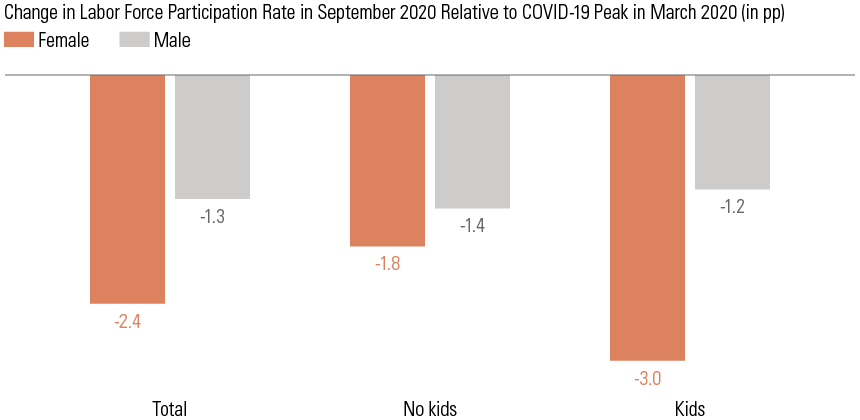For the first time ever, there is at least one woman on every S&P 500 company’s Board of Directors.1 Female CEOs in the U.S. are represented across Corporate America, including in the automotive, healthcare, info tech, energy and financial industries. Globally, countries with at least 50% female labor participation rates account for 62% of world GDP, underscoring ways in which women continue to have a significant impact on the economy.
But there is still work to be done.
- Measures of global gender parity across four broad categories—economic status, education, politics and health—suggest that the median country scored 70 out of 100 on the Global Gender Gap Index.2 The U.S. scored only two points higher than the median at 72
- Women, who often take greater responsibility for child and home care, are less likely to be in leadership positions
- Women are over-represented in service occupations
Some of these very issues, such as labor and pay gaps, have been exacerbated during the COVID-19 pandemic.
COVID-19’s amplification of the gender labor gap
COVID-19 may have amplified economic inequalities across many dimensions. Globally, women make up 39% of the workforce, but they accounted for 54% of total job losses at the pandemic’s peak.3 In the U.S. specifically, women lost 5.4 million net jobs in 2020.4 Part of this asymmetrical impact can be explained by an occupational concentration in service industries—which were most sensitive to the virus—including restaurants, hospitality and personal care.
As employment rates have yet to fully recover, American women have faced a lack of child care support through traditional systems. In fact, two out of three working parents have changed their child care arrangement because of COVID-19, and the majority have yet to find a permanent solution.5
Meanwhile, existing child care facilities are still recovering from the financial impacts of the lock-down, making it difficult for them to operate while adhering to reduced capacity guidelines. The combination of limited in-classroom learning and stretched daycare capacity may ultimately keep working moms out of the labor force even longer.
As Exhibit 1 illustrates, in the U.S. from March to September 2020, women with children left the workforce at a faster pace (+1.8pp [percentage point]) than men with children—potentially signifying the greater child care responsibilities taken on by women.
EXHIBIT 1: WOMEN HAVE DISPROPORTIONATELY LEFT THE WORKFORCE








